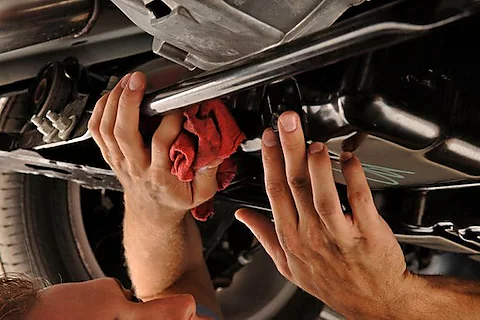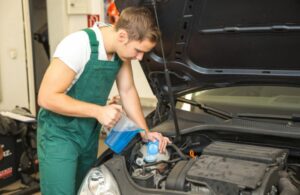Change car brake pads on their own is something almost anyone with some patience can accomplish. Begin by gathering all necessary tools – including lug wrench, c-clamp or caliper spreader tool, new pads, etc.
As part of your replacement of pads, it is also wise to replace your rotors as this could prevent uneven wear on them and possibly lead to uneven pad wear.
Remove the Caliper
Once the caliper is removed, new pads should easily slide on and snap into place (they may require slight adjustment for optimal fitting). Their ears should slot neatly into their clips – if necessary apply some brake grease around their clips as well.
Now is an excellent opportunity to compare how thick your old pads are with those from new. If they appear particularly thin, consider purchasing new pads.
Befor you begin, gather all the tools and new brake pads together. You will require a jack with stands, lug wrench and C clamp or caliper spreader tool; additionally you should have a container handy to catch any fluid that might leak during this process. Also make sure your tank of brake fluid is full before beginning this important job!
Remove the Brake Lines
Corrosive road chemicals that attack the metal in your car like sharks hunting for prey will eventually make their way to your brake lines and rustify them, increasing their susceptibility to cracking. If your brake pads begin wearing thin or are starting to wear thin quickly, replacing your lines at this time (or before) may help avoid future problems that could leave your vehicle short on stopping distance or shaking and jerking uncontrollably.
Before undertaking any action, it’s essential that you have access to the appropriate tools and an understanding of how your brake system operates. If you lack this equipment or do not understand how to replace brake pads correctly yourself, professional services should be contacted for help.
When replacing front or rear brake pads, start by loosening all lug nuts before jacking up your car and placing a jack stand underneath it. Next, remove the wheel and tire so you can access the brake assembly; once off, be sure to apply handbrake and chock the wheel so as to stop movement when loosening the lug nuts.
Remove the Brake Pads
Changing brake pads on a DIY basis is typically straightforward; however, you should also replace the rotor as soon as rust-covered parts impair performance and can cause poor stopping power.
Many new pads come equipped with retaining clips to allow for effortless pad movement without annoying squeaking. Remove your old clips and snap in your new ones with care so they match hardware positions exactly. A small dab of graphite-based grease may help stop them squeaking as they work.
Make sure your vehicle is parked on an open stretch of road with enough room to safely raise and support it while working underneath it. As you will be working with hot pads, calipers, and rotors – please wear gloves! It may also be wise to remove the cap from the master cylinder reservoir and place a rag around it in case any brake fluid escapes – this way any leaking may be captured before it causes further damage under hood or corrosion of metal parts.
Replace the Caliper
Once your brake pads and rotor have been replaced, reassembling should be straightforward. Before beginning assembly, ensure the caliper piston has been compressed (see your car’s shop manual for assistance).
Certain rotors come equipped with a small screw at their hub that secures it to the wheel hub – it is important to remove this screw before proceeding with the next step.
The caliper is usually attached to its carrier via bolts with allen heads that hold sliding pins inside its body in place, making removal by means of either pry bar or water pump pliers possible.
Remove the two bolts that connect the caliper to its carrier – please consult your vehicle shop manual for instructions on this matter. Having an appropriate container for any brake fluid that might leak is also advised (since brake fluid can corrode paint and metal). With your new caliper over the rotor and sliding it down gradually while replacing pins and spring clips along the way is recommended; for added peace of mind use thread lock and disc quieting compound to secure any newly bolted connections so they do not vibrate loose.
Replace the Brake Pads
Before installing new brake pads, it is essential that you ensure you have all of the equipment necessary for doing so. This includes jack stands and jack wrenches; lug wrenches; C-clamp/caliper spreader tools (if required); brake pads from various manufacturers as well as factory-rated fluid.
Before installing new pads, it’s necessary to retrace the caliper piston back into its body by fitting a C-clamp or compressing tool onto it and applying pressure. Consult your car’s shop manual in order to find out which compression tool will best fit with your specific caliper model.
Once you’ve installed the caliper back onto its original spot, replace all pad retaining clips and apply graphite-based brake grease to each clip. Reinstall and tighten bottom caliper slider bolt as per manufacturer specifications before giving test drives on vehicle to ensure it stops as expected.


